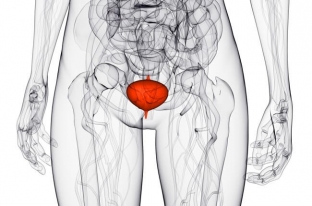Chronic cystitis – prolonged presence of an inflammatory focus with localization on the mucous membrane of the bladder. Pathology occurs with periodic exacerbations or with the constant presence of pathological symptoms. In 1/3 of all cases, chronic cystitis is the result of insufficient therapy for an acute process in the bladder. How to identify the causes and correctly verify the disease, which diagnostic methods to use, you will learn from this article estet-portal.com.
Methods of diagnosis and classification of chronic cystitis
Diagnostic measures for chronic cystitis begin with a detailed history taking, including screening of information about the genital area of the urological patient. Laboratory diagnostics consists in the appointment of a general and bacteriological examination of urine, determination of the sensitivity of the flora to antibiotics, a general blood test. To verify the diagnosis, instrumental diagnostic methods are required.
These include:
- Ultrasound of the kidneys, bladder
- X-ray with contrast agents
- Endoscopic examinations.
When diagnosing a disease in men, the reproductive organs are necessarily examined, the urologist palpates the scrotum, conducts a digital examination of the prostate gland (through the anus). This helps to link inflammation in the bladder with phimosis, prostatitis and/or orchiepididymitis.
Chronic cystitis is classified into 3 forms: latent, persistent (actually chronic) and interstitial. Latent cystitis is characterized by a complete absence of symptoms and changes in laboratory tests, persistent – undulating course, when the period of remission replaces the period of exacerbations, interstitial – this is the persistent presence of symptoms of pathology with a deterioration in the reserve functions of the bladder.
Still chronic cystitis is divided into primary and secondary chronic. Cervical, diffuse and focal cystitis – This is a classification of the disease, taking into account the degree of prevalence of the pathological process. Among chronic infectious cystitis, nonspecific and specific are distinguished.
Read also: Mistakes in the treatment of cystitis
What causes chronic cystitis
When analyzing the incidence statistics, it is clear that chronic cystitis has a clear gender identity – women from 25 to 45 years old are sick more often than the male population. It's all the fault of the anatomical features of the female body – the short urethra serves as an ascending path for many types of pathogenic flora. The root causes of the pathology are:
- Agents of bacterial nature: gram-negative enterobacteria, staphylococci
- Fungal colonies of the genus Candida
- Protozoa
- Herpetic and adenovirus contamination.
Chronic cystitis can cause calculi of the genitourinary system, benign and malignant tumor processes, hormonal changes (menopause or pregnancy), somatic disorders (diabetes, pathologies of other organs). Poor urine outflow, frequent urinary retention, neglect of hygiene rules, some features of sexual intimacy, nutritional errors, stress – this is an incomplete list of factors that can provoke a chronic form of cystitis.
Symptoms of the disease characteristic of women and men
The symptoms of the disease and the severity of the main symptoms depend on the form of chronic cystitis. Manifestations of the main signs of the disease depend on the gender of the urological patient, the clinic of the disease varies somewhat in men and women.
Exacerbations of the disease appear like acute or subacute inflammation: urination becomes more frequent, accompanied by pain in the lower abdomen and along the urethra. Then turbidity of urine may appear, blood is recorded in it. In severe inflammatory processes, there is an increase in temperature and the appearance of signs of intoxication: the general state of health worsens, nausea and sometimes vomiting appear.

Features of the symptoms of the disease in women
In women, pain often radiates to the lower back, and the urge to urinate is difficult to control. Even with careful observance of hygiene rules, signs of irritation and maceration of the skin of the perineum quickly join, pathological discharge with an unpleasant odor appears from the vagina. Their intensity varies greatly. During sexual intercourse, a woman experiences unpleasant, and even painful sensations, which makes it difficult to maintain a normal sexual life. With intimacy, urine may leak. This is due to the anatomical proximity of the vagina, bladder and urethra.
Features of the symptoms of the disease in men
Anatomically long urethra contributes to severe pain, which increases at the beginning and end of the act of urination. The man makes an effort to start the process of emptying the bladder. Often disturbed by pain and burning along the urethra. In the period between urination, urological patients feel diffuse pain in the phallus, in the groin and pubis.
In men, hematuria is less common than in women, but mucosal impurities appear more often.
The amount of urine excreted per day can decrease to 400-450 ml, and the biological fluid acquires a putrid odor. This indicates a severe exacerbation of chronic cystitis and requires the immediate provision of medical assistance in full.
Read also: Cystitis or latent pyelonephritis? Methods for diagnosing cystitis
Videos you might be interested in:







Add a comment